Featured Article
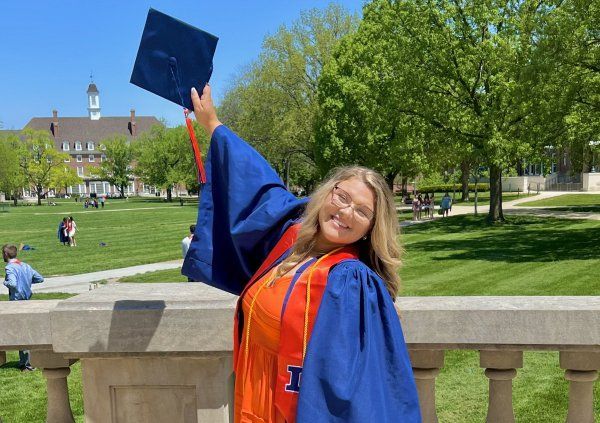
June 28, 2022
This is a question I have received countless times while embarking on my college journey. Agriculture is one of the largest, most diverse industries in the United States and what makes me think family. To me, it represents the hard workdays and long hours that those sitting in tractor give to provide for each of us. It makes me think of the incredible technology I could never understand that enables crops to be more efficient. It makes me think of the grocery stores and how lucky we are to have countless choices of different types of foods. When I hear the word agriculture, I instantly am taken back to the field with my dad in the tractor and reminded of running meals with my mom to the field.

June 28, 2022
As news events such as Roe v. Wade and gun legislation have been dominating much of the debate in Washington this summer, we at the National Corn Growers Association have been working to attract the attention of policymakers so that we can elevate the agricultural policies that are important to our membership. That’s one of the many reasons I am so excited about the upcoming Corn Congress, which will be held in the nation’s capital July 11-14. It provides us an opportunity to take passionate and deeply knowledgeable corn grower leaders to Capitol Hill in mass and get them in front of some of Washington’s key decision-makers. This year is particularly special, as it is the first time in two years that we have been able to meet in person in the nation’s capital. There is something special that an in-person connection offers that Zoom just can’t. And we have a lot to talk about with our members of Congress. We will discuss biofuels issues, such as asking lawmakers to co-sponsor the Next Generation Fuels Act, which paves the way to higher ethanol blends in America's fuel supply. And as the International Trade Commission debates duties on nitrogen fertilizers and the Environmental Protection Agency considers restrictions on atrazine, corn grower leaders will be talking about how critical it is that farmers have access to the tools necessary to continue to do more with less. Corn Congress, composed of over 100 grower delegates from corn-producing states, is held twice a year and allows the organization’s leaders to gather, talk about the issues facing our industry, and vote on policies that guide the association. This month, Corn Congress delegates will debate and vote on the organization’s priorities, which are likely to drive our positioning for the upcoming farm bill. This discussion will be important, as the farm bill is authorized every five years and includes major programs impacting farmers, from conservation programs to crop insurance to international trade and more. Therefore, being involved in the debate on this bill will be critical to the future success of corn growers and other farmers. We also want to use Corn Congress as an opportunity to educate NCGA’s members on the coalition necessary to pass a farm bill, especially in such a partisan environment. That’s why I will be moderating a discussion on the farm bill with former North Dakota Senator Heidi Heitkamp, former USDA Secretary Dan Glickman and former FSA Administrator Richard Fordyce. I look forward to asking these policy veterans what they have learned as they’ve crafted previous farm bills. I am particularly interested in learning how we can apply the lessons they’ve learned to the debate on the upcoming legislation. Be on the lookout for details from the panel discussion and on updated policies made at Corn Congress in my August column. In the meantime, here's to cooler temps, in-person meetings, great advocacy and to shaping major ag legislation. Here is to Corn Congress! Appleton is vice president of public policy at the National Corn Growers Association.
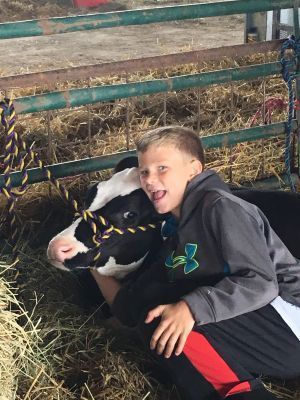
June 23, 2022
Dairy farmers are some of the hardest working people in our country. Tirelessly dedicating each long day to their cattle and to producing milk for consumers. Now is an even more important time to thank these farmers for what they do as June is National Dairy Month! Below is a list of 10 fun facts about the dairy industry, dairy cattle, and IL dairy farms. The IL dairy industry contributed around $29.14 billion in economic impact in 2021 Top 5 counties for number of dairy cows in Illinois (as Jan 1, 2022): Clinton – 11,800 Stephenson – 10,600 Washington – 6,400 Jo Daviess – 4,100 McLean – 4,000

June 23, 2022
Primary elections are next week and if the campaign postcards and flyers in our mailbox are any indication, we’re in for an exciting evening on Tuesday night! Your IL Corn Growers Association has been working hard to connect with as many candidates as possible. We hope to get to know them, better understand what motivates them and what their top issues are for citizens in Illinois and determine a path forward to advocate for farmers in the case that they are elected. Over the past month, ICGA leadership has met with Dan Brady, candidate for Secretary of State; Esther Joy King, candidate for the new 17th Congressional District; Jonathan Logemann, candidate for the new 17th Congressional District.; Scott Gryder, candidate for the new 14th Congressional District; Nikki Budzinski, candidate for the new 13th Congressional District; and Regan Deering, candidate for the new 13th Congressional District. Getting to know the people that represent you in Springfield, IL and Washington, DC is one way that we position the farmers of Illinois to grow.
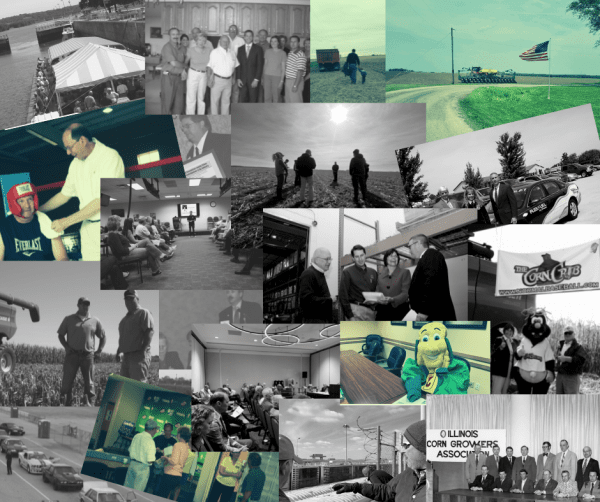
June 16, 2022
Save the date: the IL Corn Growers Association will celebrate 50 years of service to farmers on August 8, 2022 in Bloomington at the DoubleTree Hotel. The IL Corn Growers Association was incorporated on July 30, 1971 by John Curry of Victoria, Housel Roberts of Altona, Rolland Main of Altona, John Block of Gilson, and Donald Love of Galva. The group’s first meeting was held at the Knox County Farm Bureau in Galesburg on February 18, 1972. Since then, ICGA has a long history of advocating for Illinois corn farmers on a myriad of issues. In the 70s, ICGA farmer leaders were focused on membership drives, building county corn organizations, considering an Illinois corn checkoff program, and understanding trade. Today, the conversations are more about infrastructure (locks and dams), ethanol policies, environmental regulations, pesticide registrations, and farm bill program development. The farmer leaders focus on environment and conservation practices more than they needed to in the 70s. But they talked a lot about farm prices and interest rates in the 80s. They talked about locks and dams in the 90s. They talked about renewable fuel standards in the early 2000s. And they talked about crop insurance in the 2010s. What we know is that each and every year, ICGA farmer leaders gather together to discuss and resolve the issues that impact Illinois corn farmers. They trigger calls to action when needed. They invest their own time getting to Springfield, IL and Washington, DC to make sure farmer voices are part of the conversation. There’s a lot to celebrate here and the IL Corn Growers Association hopes that our membership will show up to celebrate with us.

June 8, 2022
Precision Conservation Management (PCM), a program of IL Corn and the Illinois Soybean Association, released their annual “Business Case for Conservation” this month in the Prairie Farmer magazine. The Precision Conservation Management program was created by farmers, for farmers, to assist in the evaluation of on-farm conservation decisions. The 2022 report highlights include several recommendations around nitrogen application and tillage management. The most important take-home messages: Including all the data in the PCM dataset, applying nitrogen over MRTN rates never a profitable system. If you are applying more nitrogen than is recommended by MRTN, you are losing money on that nitrogen investment AND likely causing a negative impact on your environment. The most profitable acres in the PCM dataset are utilizing preplant and sidedress nitrogen applications at MRTN rates. If you are still fall-applying nitrogen, consider moving to a different management system for 2023. More than two heavy tillage passes is never more profitable than other tillage management systems in the PCM dataset. If you are utilizing heavy tillage, consider moving to lighter tillage systems like strip tillage for the next crop year. The report also concludes that cover crops continue to be the most important and impactful conservation practice available to farmers, though it is not always the most profitable. PCM recommends that all farmers apply for cover crop grants or cost-sharing programs to offset the cost of the new practice. Within our dataset, cover crop acres are still minimal and farmers utilizing the practice are relatively inexperienced. As our dataset grows and farmers learn what will work in their regions of Illinois, we expect to see cover crops as a business practice become more and more profitable. Please review the PCM 2022 Business Case for Conservation in full here.
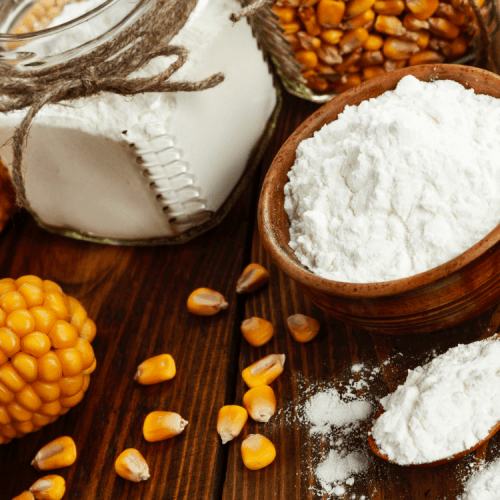
June 6, 2022
When walking out of the house it is hard to grab everything we may need throughout the day. It would be much simpler if there was a product that simple did it all. Corn starch can be the answer to many common annoying problems each of us face. BUG BITES The first one is one I am defiantly going to have to let my brothers know about for this farming season. As soon as the Sun pops out and the weather is nice those pesky bugs also make their debut. Cornstarch can be the new thing to tuck in your back pocket to use when a bug bites you. Simply, take some cornstarch and mix it with water to create a thick paste and place it on the bite to get that annoying itchiness to go away.
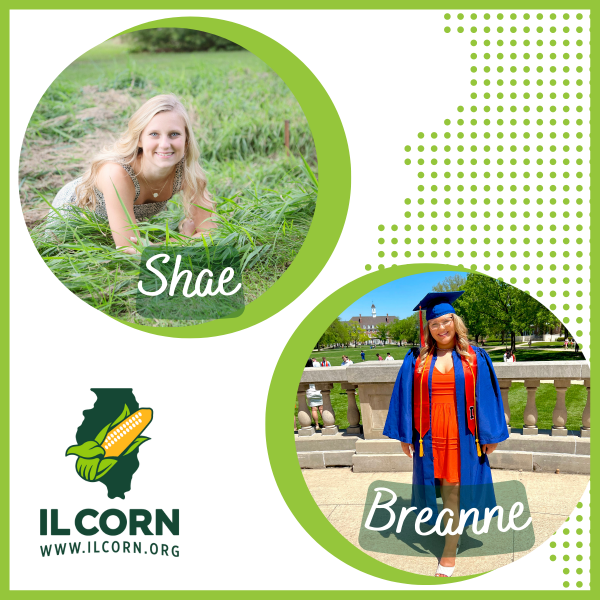
June 2, 2022
Great news at IL Corn, we have two new interns that have swung into action. This duo has already started pitching in to some priorities at IL Corn. Here's a little bit about Breanne Gullidge and Shae Ruppert. Meet Breanne Breanne grew up on a small grain and cattle farm in Louisville, IL. In May of 2022 she graduated from the University of Illinois Urbana-Champaign after studying Agriculture Consumer Economics with a concentration in Public Policy and Law. This summer she is studying for the LSAT and plans to attend law school in August 2023. Her career goals are to focus on agriculture law and advocating for farmers. These career goals are what lead her to seek out a position at IL Corn to gain a better understanding of the Association’s legislative priorities and how they advocate for farmers. "Farmers have a lot on their plate as technology changes and population rises so I am excited to help and learn about how IL Corn partners with our legislators to help agriculture," says Breanne.
Articles
2025
2024
2023
2022
2021
2020
